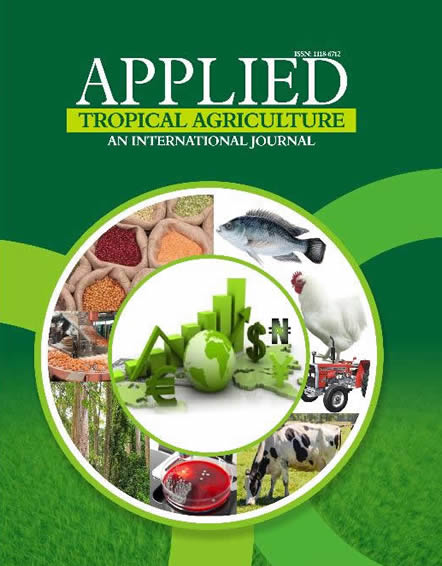This study investigated exposure level to pathogenic microorganisms and potential risk to aflatoxins for consumers of kulikuli and donkwa vended along three highways in Southwest Nigerian. A total of 162 samples from vendors along Akure-Owo, Akure-AdoEkiti and Ibadan-Ogbomoso highways were subjected to microbiological examination to determine microbial quality, incidence of pathogenic bacteria and aflatoxin contamination. 4 4 2 2 Aerobic colony, staphylococcal, salmonella and fungal counts were 1.19x10 -3.00x10 cfu/g; 1.05x10 -1.80x10 2 2 4 5 cfu/g; 1.05x10 -2.60x10 cfu/g and 1.2x10 -8.0x10 cfu/g, respectively. Although coliforms and E. coli were not detected, high Salmonella count is above acceptable microbiological quality and may pose public health risk. Thirteen (13) bacterial (Corynebacterium spp. predominated) and seven (7) fungal species, predominated by Aspergillus spp. were isolated. Pathogenic microorganisms present included Staphylococcus aureus subsp. aureus, Listeria monocytogenes, Bacillus cereus var mycoides, Salmonella choleraesuis subsp. Choleraesuis serovar gallinarum, Aspergillus flavus, Aspergillus parasiticus, Fusarium compacticum and Penicillium oxcalicum. High percentage occurrence of 83.33% was obtained for Staphylococcus aureus subsp. aureus, Aspergillus flavus and Aspergillus parasiticus, while Listeria monocytogenes and Salmonella choleraesuis subsp. Choleraesuis serovar gallinarum both had 66.67% occurrence. High exposure levels greater than or equal to 50% were estimated for Listeria monocytogenes (55.56%), Staphylococcus aureus subsp. aureus (50%) and Aspergillus parasiticus (66.67%), indicating high probability of infection or poisoning on consumption of these snacks. Aflatoxin contents ranged from 3.0-46.0 ug/kg, with AFB1 having highest values especially in the donkwa samples from all three locations. These values which are higher than 15 µg/kg recommended by NAFDAC as the Maximum Allowable Limits of aflatoxins pose serious health risks to consumers of these snacks. Keywords: Aflatoxin, Food-borne disease, Food safety, Kulikuli, Mycotoxigenic moulds, Pathogenic microorganisms, Peanut-based snacks, Southwest Nigeria
PAPER TITLE :MICROBIAL QUALITY AND AFLATOXIN CONTAMINATION OF READY-TO-EAT PEANUT-BASED INDIGENOUS SNACKS VENDED ON THREE HIGHWAYS IN SOUTHWEST NIGERIA
APPLIED TROPICAL AGRICULTURE | VOLUME 25 NUMBER 2 2020
Paper Details
- Author(s) : Ayo-omogie, H. N.
- Abstract:


